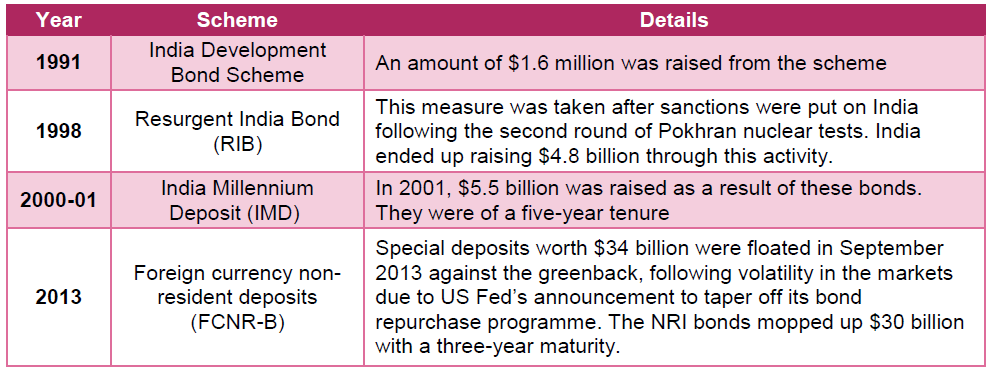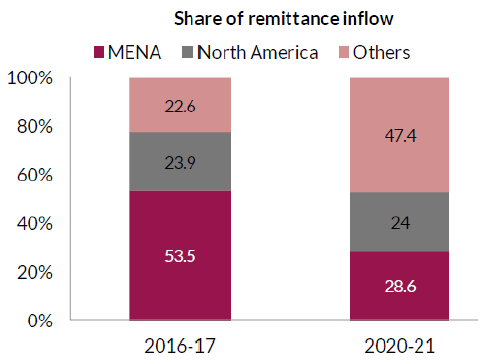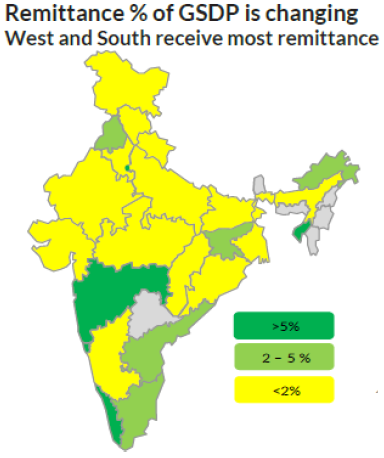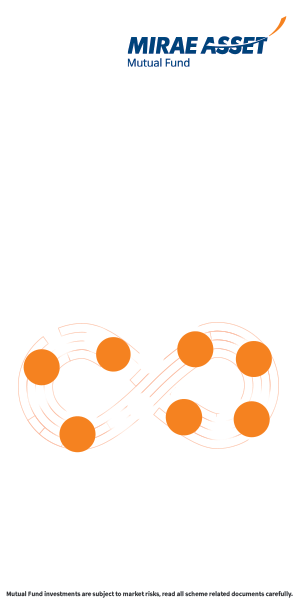NRI Remittances: The Economy's friend
Mutual Fund
India – A Remittance Hotspot
Diverse diaspora and strong domestic roots have ensured, Indians residing overseas have remitted funds back home regularly to support families and invest in the India growth story. Emigrants from India form an integral part of the global workforce. Well educated, proficiency in English and ability to adapt makes Indians an ideally suited to integrate into workforces across the world. Strong familial bonds result in a large proportion of this workforce remitting sizable sums back home.

Source: UN Knomad, World Bank, CEIC, Axis Capital
NRI Flows – The Opportunistic Set
NRI deposit schemes orchestrated by the government & the RBI are targeted at a select group of overseas Indian’s who invest with an intention to benefit disproportionately over the medium term on account of a higher dollarized interest rate. These investors are extremely sensitive to forex rates and hence demand such a premium for their foreign currency investments

During times of turmoil The RBI has tapped NRI flows via targeted bond schemes which have proved useful in shoring up FX reserves and help deal with any decline in the domestic currency. The resulting flows help alleviate near term pressures on the external balance sheet.

Source: Axis MF Research, RBI, Morgan Stanley, News Reports
Determinants of Remittances
Remittance trends are based on macro economic conditions in the home countries and the ability of the Indian diaspora to capture such economic upside. This depends on the social strat of Indian migrants and the job profiles they occupy within local economies.
Flows from North America and Europe are primarily driven by individuals operating in the service sector and hence depend on macro economic conditions of the underlying countries. In normal conditions, A good economic climate drives higher remmmitance numbers while a weak environment crimps remmitance flows.
The Middle East generates large savings surpluses from high oil prices, which in turn fuels the tourism and construcition boom. Indians in the GCC countries are predominantly engaged in these sectors and beneift from the rise in oil revenues indirectly. This results in higher remmitance flows. India’s low to medium skilled labor may also lose out to if there are rifts between nations. e.g. the Bharain uprising 2011.

Source: CEIC, Axis MF Research
Biggest Beneficiaries of NRI Remittances
Popular perception is that a major chunk of India’s NRI population hail from Kerala. This is partly true with Kerala being a traditional beneficiary of remittance inflows (10% of GSDP in 2017), but this is likely to change. As per indications from a recent RBI study, nearly 50% of emigration cleared by the Ministry of External Affairs in 2020 was from Northern states like Uttar Pradesh, Orissa, Bihar and West Bengal. This is reportedly due to narrowing of wage differentials between the Gulf and Southern states. The role of remittances in GSDP is already falling in states like Kerala (7.5% as of FY21) and Karnataka, whereas it is rising in Northern states. Significant rise in remittance % of GSDP in Maharashtra and Delhi could be support to families given severe Covid impact and the GSDP itself falling drastically during FY21.

Source: RBI, Axis MF Research. Data as for financial year 20-21
Due to these shifts, the RBIs FY21 survey notes fall in average value of remittances. The other trend that is noticed is the rising prominence of North America in remittance inflows. The US is now the largest individual country source of remittances (23.4% of total) overtaking UAE at 18%. This is possibly driving shift in remittance share from public sector banks to private sector banks (53% market share) and foreign banks operating in India.
Recent Fall in INR – An Opportunity for NRIs
The recent strength of the USD against a host of global currencies has also impacted the Indian currency with the INR losing ~ 7.5% against the USD YTD. Though there has been no intervention by the government or the central bank in raising deposits from overseas, banks have stepped up campaigns to attract dollar assets with attractive interest rates.
Disclaimer
Source of Data: Axis MF Research, Axis Capital, Morgan Stanley. Data as of 25th August 2022
This document represents the views of Axis Asset Management Co. Ltd. and must not be taken as the basis for an investment decision. Neither Axis Mutual Fund, Axis Mutual Fund Trustee Limited nor Axis Asset Management Company Limited, its Directors or associates shall be liable for any damages including lost revenue or lost profits that may arise from the use of the information contained herein. No representation or warranty is made as to the accuracy, completeness or fairness of the information and opinions contained herein. The material is prepared for general communication and should not be treated as research report. The data used in this material is obtained by Axis AMC from the sources which it considers reliable.
While utmost care has been exercised while preparing this document, Axis AMC does not warrant the completeness or accuracy of the information and disclaims all liabilities, losses and damages arising out of the use of this information. Investors are requested to consult their financial, tax and other advisors before taking any investment decision(s). The AMC reserves the right to make modifications and alterations to this statement as may be required from time to time.
Axis Mutual Fund has been established as a Trust under the Indian Trusts Act, 1882, sponsored by Axis Bank Ltd. (liability restricted to Rs. 1 Lakh). Trustee: Axis Mutual Fund Trustee Ltd. Investment Manager: Axis Asset Management Co. Ltd. (the AMC) Risk Factors: Axis Bank Limited is not liable or responsible for any loss or shortfall resulting from the operation of the scheme.
(Mutual Fund investments are subject to market risks, read all scheme related documents carefully.)
MUTUAL FUND TOOLS & CALCULATORS
Recent News
-
Mr. Navneet Munot's 'Person of the Year 2025'
Dec 31, 2025
-
The Wealth Company Mutual Fund Receives SEBI Approval to Launch Specialized Investment Fund SIF
Nov 26, 2025
-
Axis Mutual Fund Launches Axis Multi Asset Active FoF Fund of Fund: A One Stop Solution for Dynamic Asset Allocation
Nov 21, 2025
-
The Wealth Company Mutual Fund makes record debut with four active NFOs, garners close to Rs 2000CR
Oct 29, 2025
-
Axis MF Launches Axis Income Plus Arbitrage Passive FOF
Oct 28, 2025







